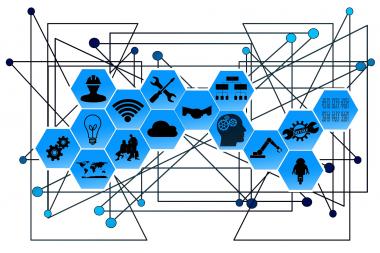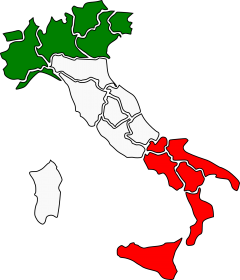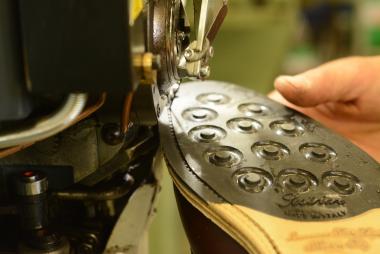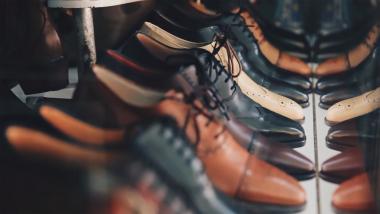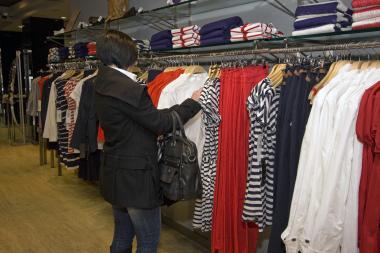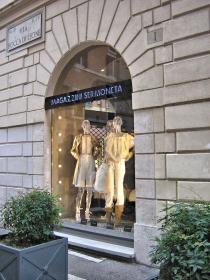ITALY'S SHOE AND LEATHER INDUSTRY WANTS TO BECOME MORE DIGITAL
- Rethinking in traditional industry
Italy's shoe and shoe technology manufacturers are losing market share in important markets and want to make their production more efficient and digital. German companies score points in niches.
Even though 9 out of 10 shoes today come from Asia, Europe's largest shoe producer Italy still ranks among the top ten of the world's largest shoe producers and is the undisputed market leader in the luxury segment. Nevertheless, sales in terms of volume at home and abroad are falling and so is production. At the moment, the sector can only secure its turnover through higher prices.
The decline in export demand, which accounts for around 85 percent of Italian footwear, is particularly painful. According to the sector association Assocalzaturifici, international sales fell by around 4 million pairs between January and October 2018. Only an average price increase of 6.4 percent enabled a year-on-year increase. On the German sales market, sales of Italian shoes also stagnated at around EUR 1 billion, while German shoe exports to Italy, with a plus of 34.5 percent to around EUR 485 million, achieved one of the highest growth rates in German trade with Italy.
Orders received by the Italian footwear industry in the fourth quarter of 2018 declined both domestic (-2.5 percent) and abroad (-0.9 percent). The only market segment that is still growing in Italy itself are sports shoes/sneakers. According to experts, the falling number of units drives manufacturers to find solutions that help to reduce production costs.
Opportunities for Germans in Digital Change and in niches
In the shoe and leather technology domestic manufacturers dominate. Assomac, the Association for Shoe and Leather Technology, estimates, that in 2018 the approximately 240 Italian companies in the sector achieved a turnover of around EUR 760 million. By contrast, exports of shoe and leather machinery, which account for around three quarters of the sector sales, fell by around 6.2 percent in 2018. Italy is by far the most important exporter of leather and shoe technology in the world. In 2018, shoe and leather machinery worth of around EUR 439 billion went abroad, particularly to China, Vietnam and India.
German deliveries of shoe and leather technology to Italy are at a low level and, according to the VDMA trade association Textile Care, Fabric and Leather Technologies, reached around EUR 4 million in 2018. Italy thus ranked fourth behind China, the USA and Mexico in terms of export destinations. With foreign deliveries of around EUR 50 million per year, Germany is the world's fifth largest exporter.
Market experts see opportunities for German companies in Italy with components that help domestic companies in international competition, for example the use of intelligent and networking machines. Despite their great competence, Italian manufacturers are very traditional and are struggling with the digital changes. But industry experts report that the companies are rethinking and interested in new solutions.
"We support our Italian customers in installing more software solutions for sewing machines and in networking machines," says Sebastian Feges, sales engineer at the Schwetzingen-based company EFKA, one of the last German companies in the sewing industry. EFKA supplies Italian shoe and leather machine manufacturers with sewing drive controls. The company scores particularly well in areas where maximum precision is essential and every wrong stitch leads to expensive scrap, such as leather seats for Ferrari. According to Feges, money for investments in Italy is not easy to get at the moment. However, he sees an interesting perspective in the promotion of the Italian government for the purchase of industry 4.0 equipment and software, the so-called Iperammortamento, which is not yet sufficiently known.
Further opportunities exist in niches that are gaining in importance due to current industry trends such as digital printing on leather. The machines of Hansa Mixer from Bremen produce foam for textile and digital printing and the sealing of leather hides. "We offer a niche product that can be used anywhere," General Sales Manager Achim Schmidt says. In addition to the shoe and leather industry, Hansa Mixer also supplies food manufacturers such as Ferrero. "Italy is an interesting market for us and we expect good orders."
Another industry trend is greater sustainability, especially in the often-criticized leather industry. Assomac is expressly committed to this goal and has – next to other thing - introduced the new Targa Verde certificate.
| Indicator | Value | Change in 2018/2017 |
| Imports of shoe and leather machinery (HS 8453) | EUR 36 mio | 5.6 |
| Footwear production | 185.7 million pairs | -2.6 |
| Domestic Shoe industry sales | EUR 7.8 billion | 0.7 |
| Export volume 2018 | 176.5 mio pairs | -2.3 |
| Export revenues | EUR 9.6 billion | 3.9 |
Sources: Assocalzaturifici, Instat
The Italian footwear industry consists of about 4,700 companies with about 77,000 employees. According to the industry association Assocalzaturifici, sector sales in 2017 amounted to about EUR 14.2 billion. Industry clusters are the regions of Venice, Tuscany, Marche, Lombardy, Campania, Apulia and Emilia Romagna. The cluster in Brento, Veneto produces about 11 percent of the national output. Also International manufacturers such as LVMH and Louis Vuitton are investing and producing in Italy.
Oliver Döhne, Germany Trade & Invest www.gtai.de


